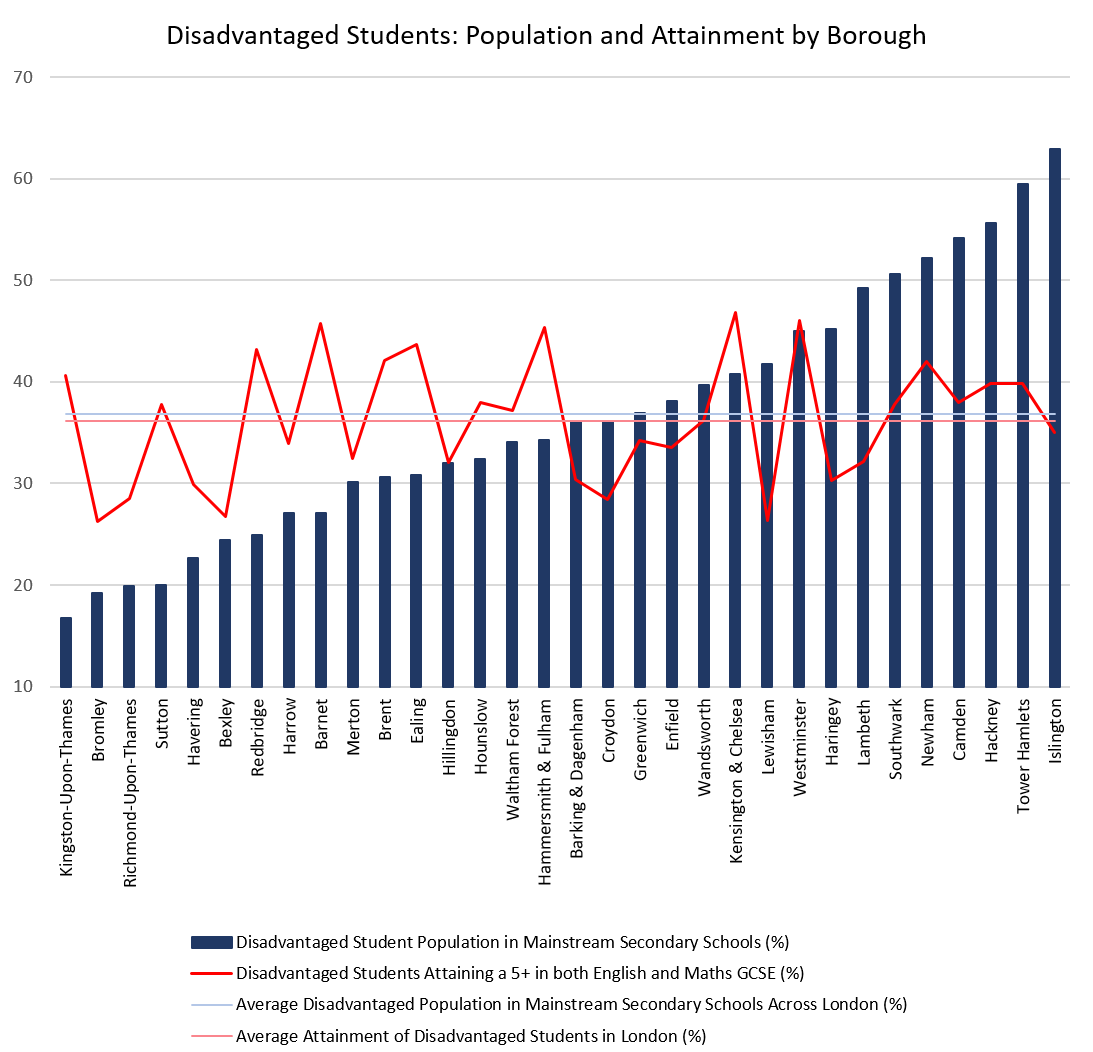Chapters
Education is a fundamental right that should be accessible to all, regardless of socioeconomic status. Unfortunately, this is not always the case, and disadvantaged students are often left behind. These students face many challenges that hinder their ability to succeed academically, including inadequate resources, lack of support, and systemic inequality. In this article, we will explore the issues facing disadvantaged students in education and discuss potential solutions to break the cycle of inequality.
In this section, we will provide an overview of the topic, including definitions of key terms and statistics that highlight the extent of the problem.

What are Disadvantaged Students?
In this section, we will define what we mean by disadvantaged students, including factors that contribute to their disadvantages, such as poverty, race, and geographic location.
- Poverty: Poverty is a significant barrier to educational attainment, as students living in poverty often lack access to resources that can support their learning, such as books, technology, and tutoring.
- Race: Race is also a factor that can contribute to educational disadvantage, as students from minority groups often face discrimination and bias in the classroom and have fewer opportunities for academic success.
- Geographic Location: Students who live in rural or remote areas may also face disadvantages in education, as they often lack access to high-quality schools and resources.
The Challenges Facing Disadvantaged Students
In this section, we will explore the challenges that disadvantaged students face in education, including academic challenges, social challenges, and challenges related to mental health and well-being.
- Academic Challenges: Disadvantaged students often struggle academically due to a lack of access to resources and support. They may also face additional challenges, such as language barriers and learning disabilities.
- Social Challenges: Disadvantaged students may also face social challenges in school, such as bullying, social isolation, and discrimination.
- Mental Health and Well-being: Disadvantaged students are also at risk for mental health issues, such as anxiety and depression, which can impact their ability to learn and succeed academically.

Taking a look at potential disadvantages in education
Disadvantaged students might not have the appropriate facilities for working at home. While some students might have a comfortable spot to retreat to in their family homes in order to work through the homework that their teacher had left them, other students don’t have the same luxuries.
What many students will take for granted is their workspace in their homes which makes all of their study and preparations for a class more accessible.
The challenge for students to find a quiet place to study is another contributing factor to their disadvantage at school. Poorer students are more likely to share a room or possibly not have one at all.
Some student will in fact misplace their assignments or coursework because they have no place to keep their work. Can you imagine that some students need to do their homework on the sofa in the living room or on their beds?
In addition to this, many students that come from underprivileged backgrounds don't have the same attitude towards education and might have never considered studying at university after they complete their secondary school exams.
It isn’t uncommon for students in such a scenario to not have anybody to strive for or who has aspirations for them. This can largely be attributed to their parents or caregivers not having pursued a career in academia, causing some students to question their own need to do so.
Many students have a helping hand that they can rely on if needed at home. If the student’s parents simply don't grasp the subject it can certainly make it challenging for the student to engage in the subject.
There are more ways that disadvantages can arise in education and access to education than we often consider. Let’s try and take a look at some of the ways in which we can combat this and improve education for disadvantaged learners.
Life is by no means over if you didn’t get the result for sixth form college.

Targetting by disadvantaged students' attainment
There is a great deal of inherited opportunity that stems from the background of students, the environment that they were raised in and the location that they grew up in that gives certain students significant advantages over others.
It is important that we construct and amend our current educational institutions and structures so that education is more accessible and equal for students no matter what their background is.
The Social Mobility Index provides metrics which echo some of the potential disadvantages that might be experienced by students.
The Index analyses the likelihood that a kid from a disadvantaged home would do well at school and achieve a good career across every local authority in England.
Where you reside actually has a dramatic effect on your educational prospects in England. Additionally, the poorest districts may not always have the worst achievers. Have a look at the graph provided below to see some of the disparity which exists across London for yourself.
And herein lies an important distinction. Not only should we ask which schools have the most disadvantaged students; we should ask which schools have the students that are most disadvantaged. Where are the students most at risk of being underserved and failing their education?

Where we should place emphasis
You can see from the graph provided above how various London boroughs might respond to this question. Even in broad strokes, it is obvious that placing more focus on disadvantaged populations' attainment will prioritize different parts of London than would placing more emphasis on the percentage of disadvantaged students.
Disadvantaged kids are more likely to achieve significantly better than average in KS4 Math and English in some boroughs where the percentage is much lower than the national average.
The disparity in outcomes is perhaps most evident in Lewisham and Haringey, where the non-selective mainstream secondary schools' disadvantaged student populations differ by only 5%, but where kids are up to 20% more or less likely to earn their necessary certificates by the age of 16.
Instead of our ‘>50% Pupil Premium’ threshold we could introduce another measure, opening our programme to schools in which <25% of disadvantaged students are expected to gain a 5 or higher in both English and Maths GCSE. We estimate this policy would qualify 95 mainstream secondary schools in London, only 17 of which would have been qualified by their disadvantaged student population.
The impact that this modification in the metric would cause in some boroughs is depicted in the graph below. Eight Camden schools currently qualify for our program, but if we only looked at the results for low-income students, only one Camden school would be left. Contrarily, in Croydon, just 1 school has a disadvantaged student population larger than 50%, however, based on the achievement of its disadvantaged students, 9 schools would qualify.
Results day can be tough, make sure to consult a survival guide to get through it.

Solutions for Breaking the Cycle of Inequality
In this section, we will discuss potential solutions for addressing the challenges facing disadvantaged students in education, including policy changes, community involvement, and individual interventions.
- Addressing Poverty: Poverty is a significant barrier that affects the academic performance of disadvantaged students. To address poverty, policymakers need to implement measures that reduce income inequality and provide targeted support for disadvantaged families. This could be done by increasing the minimum wage, providing affordable housing, expanding access to childcare services, providing free meals for low-income students, and finally, ensuring access to educational resources such as textbooks and computers
- Allocating Resources: Schools in disadvantaged areas often have fewer resources than schools in more affluent areas. To address this issue, policymakers need to allocate resources to schools in disadvantaged areas and provide targeted funding for teacher training and professional development. This could be done by allocating resources to schools in disadvantaged areas, providing targeted funding for teacher training and professional development, expanding access to extracurricular activities, and providing mentoring programs and career guidance
- Providing Support Poor academic performance is a significant barrier that disadvantaged students face. Schools could provide additional support to students who are struggling academically, including tutoring and mentoring programs. This could be done by providing tutoring and mentoring programs, providing additional support to students who are struggling academically, working to improve the quality of education in disadvantaged areas, and providing professional development for teachers to better support disadvantaged students.
- Breaking the Cycle of Inequality Breaking the cycle of inequality of disadvantaged students in education requires a concerted effort from all stakeholders, including educators, policymakers, and society as a whole. This could be done by implementing targeted policies and initiatives to reduce inequality, encouraging a collaborative approach between stakeholders to address the issue, increasing awareness of educational inequality and its impact on disadvantaged students, and providing opportunities for disadvantaged students to engage in extracurricular activities and programs
In conclusion, addressing the educational inequality of disadvantaged students requires a comprehensive approach that addresses the underlying social and economic factors contributing to the problem. Through targeted policies and initiatives, increased awareness, and collaboration among stakeholders, we can help to break the cycle of inequality and ensure that every child has access to quality education and the opportunity to achieve their full potential.











